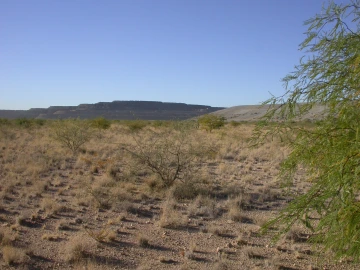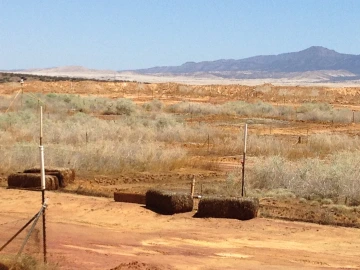Mission Statement
The mission of the Center for Environmentally Sustainable Mining (CESM) is to develop research and educational initiatives that address environmental sustainability issues associated with mining and rock products operations in arid and semi-arid environments.
Rationale
The US is one of the largest global consumers of mineral resources. Innovative approaches are critically needed for sustainable mineral resource development in the US in the 21st century. Sustainable mineral resource development addresses the environmental, social, and economic impacts of mine development, operation and closure on neighboring communities and ecosystems. The CESM model emphasizes research collaboration with industry partners through industry-academic cooperatives.

CESM Objectives
- Support research that provides more effective and efficient tools for ecosystem regeneration and waste stabilization following mine closure
- Provide quantitative tools to make reclamation a data-driven science
- Provide site-specific guidelines for quantitative ecosystem assessment prior to mine development as a baseline for future reclamation metrics.
- Quantification of carbon sequestration potential as a post-mining land use objective in arid lands
- Facilitate neutral tech transfer to state and national policy makers and regulators
- Facilitate active participation of communities impacted by mining operations
- Provide critical training for undergraduate and graduate students as future members of a well-trained workforce, key to sustainable mineral resource development
- Provide professional development courses and conferences
CESM facilitates broad cross-campus collaboration between University of Arizona academic partners from the Colleges of Agriculture, Life and Environmental Sciences, Engineering, Science, and Public Health. Close collaboration is maintained with the School of Mining and Mineral Resources (SMMR), the Lowell Institute for Mineral Resources (IMR) and their associated centers for innovation including the Geotechnical Center of Excellence.
Focal Areas
- Revegetation strategies and monitoring for mine waste reclamation
- Characterization of metal accumulation patterns in diverse native plant species
- Quantification of carbon sequestration potential on reclaimed mine sites
- Erosion mitigation at reclaimed sites
- Closed site management and monitoring
- Recovery of rare earth elements and metal(loids) from industrial waste streams
- Remediation of legacy mine wastes including fate and speciation of contaminant metal(loid)s
Technical Advisory Committee
A Technical Advisory Committee (TAC) meets biannually to help prioritize and develop the research and educational initiatives of CESM. The TAC is comprised of environmental professionals in major mining and consulting firms who identify issues of concern to the hard-rock mining and rock products industries.

Superfund research field trial demonstrating successful plant establishment on compost-amended, highly pyritic, metal(loid) contaminated mine tailings at the Iron King Mine Federal Superfund site in Dewey-Humboldt, Arizona.
History
In 2011, the Lowell IMR in collaboration with the University of Arizona Superfund Research Center developed CESM as an environmental pillar that addresses issues associated with the environmental sustainability of mining and the management of legacy mining sites. The Superfund Research Center has an extensive history of studying waste containment and land recovery strategies for legacy mining sites throughout Arizona. CESM has built on this work by extending the research focus to active mining operations. Exploratory research funding was initially provided by the Technology Research Initiative Fund Water Sustainability Program (TRIF-WSP). CESM research is currently funded by industry memberships to the Industry-academic research cooperative. Support is also provided by the School of Mining and Mineral Resources (SMMR) for the development of educational opportunities through Professional Development courses, graduate student fellowships, and community outreach programs. SMMR also provides exploratory funding to faculty for the development of innovative research initiatives associated with the sustainability of mining.
Past Research Projects
- Airborne particulate matter related to mining activity (Eric Betterton, Eduardo Saez, Armin Sorooshian)
- Erosion prediction model development for tailings embankments (Jon Pelletier)
- Remote monitoring of tailings storage facilities (Gail Heath)
- Phytostabilization of pyritic, metal contaminated legacy tailings in arid environments (Raina Maier, Jon Chorover)
- Metal speciation of pyritic mine tailings in arid environments (Jon Chorover, Robert Root, Raina Maier)
- Characterizing and enhancing the natural attenuation of nitrate and sulfate in ground water (Mark Brusseau)
- Collaborative Investigation of In-situ Biosequestration for Remediation of Uranium in Groundwater at the Monument Valley UMTRA Site (Mark Brusseau)
- Mining and Environmental Educational Modules for Tohono O’odham Community College (Karletta Chief, Raina Maier)
- Environmental biotechnology for the treatment of acid rock drainage (Reyes Sierra, James Field)
- Commodity markets for copper (Dan Scheitrum)
- Roles of obligate oligotrophic bacteria in unreclaimed mine waste sites (Paul Carini)

